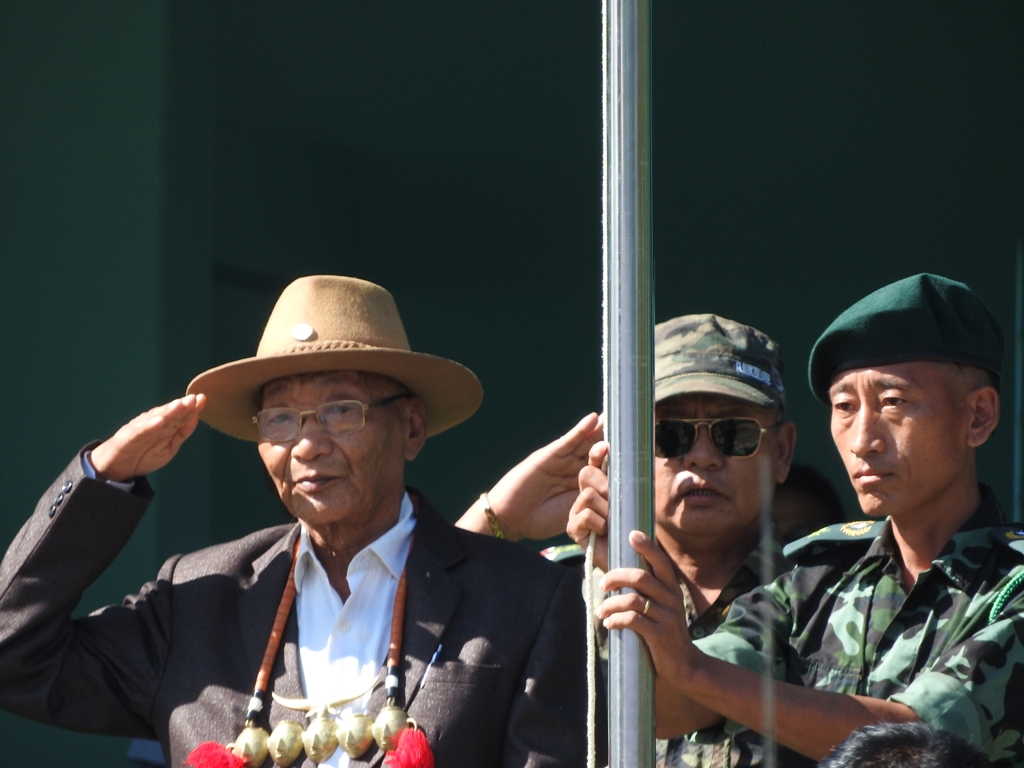Share
DIMAPUR — The GPRN/NSCN (Unification) celebrated its 17th anniversary, using the occasion to highlight the progress made in its negotiations with the government of India (GoI) while contrasting its approach with that of the NSCN (IM) and the Framework Agreement.
Speaking at the event, Ato Kilonser, Alezo Venuh, highlighted the group’s role in bringing together various Naga political groups (NPGs) under the Working Committee, Naga National Political Groups (WC-NNPG), which had signed the Agreed Position with the Centre on November 17, 2017. In the past seventeen years, “even in the midst of chaos and brutal fratricidal acts, GPRN/NSCN has stood tall, celebrating each year the rebirth of Naga consciousness; reconciliation and unity among Naga political groups,” he said.
Venuh, who is also co-convenor of the WC-NNPG, focused heavily on the political negotiations with the GoI, highlighting the “Agreed Position” as a significant achievement that replaced words like “insurgency” and other “abominable terms which demeaned the Nagas and their just struggle” with the phrase “political and historical rights of the Nagas.”
“GoI has acknowledged the universal principle of the right to self-determination of peoples and nations, and Nagas too must consider the political realities of the day. This understanding is the key and focal point,” he added.
He further asserted that the “Naga legitimacy through ‘Agreed Position’ is absolutely clear in the considerations of Indian and South Asian conflict scenarios.”
Venuh directly contrasted this with the 2015 Framework Agreement (FA) signed between the GoI and NSCN (IM), describing the FA as a “non-disclosure document or rather undocumented parleys.”
“Negotiations from 1997 to 2015 had failed to do justice to the Naga political issue. Everything was shrouded in mystery save for a single-page FA,” he maintained.
Also, “the 3rd August 2015 made the Naga political issue an internal matter of the government of India. This is a fact. The government of India and NSCN (IM) celebrated the signing of the Framework Agreement with the Prime Minister, Home Minister, NSA, Deputy NSA, the interlocutor, and the core of NSCN (IM) leadership. Did the Indian Prime Minister Mr. Narendra Modi attend the ceremony to celebrate granting Naga integration, Naga flag or Naga constitution outside the Union of India?” he stated.
Criticising the perceived lack of transparency and the absence of detailed provisions in the Framework Agreement, Venuh contrasted it with the detailed and documented nature of the Agreed Position. He recounted an incident where the then interlocutor, RN Ravi, reportedly refused to record agreements in writing, a decision he described as a “rude shock” to the NNPG delegation. This, he argued, highlighted a fundamental difference in approach between the two negotiating parties. The WC-NNPG, he insisted, prioritised transparency and documentation, ensuring that all aspects of the negotiations were officially recorded for future reference.
The ato kilonser also addressed the issue of Naga integration and said that the GoI, in the Agreed Position, has agreed to constitute a High Power Committee to work out the traditional boundaries of Naga areas, signifying progress towards Naga integration. He emphasised, however, that “Naga integration is our people’s legitimate right. Unfortunately, this is now a mere slogan to buy political relevance and create false hope.”
He went on to state that Naga self-determination, encompassing a separate government, constitution, defence forces, foreign policy, and flag—elements inherent to a sovereign nation—must be explicitly detailed in any agreement. “It was the toughest task for NNPGs to undo the damages done earlier in the Agreement so stated to have been made on 3rd of August 2015,” he added.
This self-determination, he continued, “lies in the Naga identity, absolute control over the land, its resources, customary laws, practices, and procedures, the sovereign power of the Nagas remains vested in the independent federal system of villages and territories of each Naga tribe.”
The WC-NNPG’s negotiations have yielded a proposed bicameral Tatar Hoho legislature for Nagaland: a customary upper house (Nagaland Federal Hoho) and an elected lower house (Leacy Hoho). Further provisions include a Naga insignia and flag, a dedicated passport page for Naga identity, and a potential review of the 1962 Indo-Burma Border Agreement to facilitate free movement, he maintained.
He also criticised past negotiation strategies, stating that “negotiation table cannot be taken as a platform to argue, debate, or give lectures on history every time. Neither is it a platform to brag, threaten others with international connections, and what political and military damage one could inflict upon India.”

During the event, GPRN/NSCN President Gen. MB Neokpao Konyak unfurled the Naga national flag, followed by a military parade.
Isak Sumi, co-convenor of WC-NNPG, delivered a solidarity message emphasising the need for honour and integrity in the pursuit of peace and a political solution. He urged for introspection, noting that Nagas have missed many opportunities in the past.
A representative from the Forum for Naga Reconciliation (FNR) also addressed the gathering, highlighting the numerous internal and external challenges facing the Naga people. He called for unity and a rejection of self-serving leadership, stating that “the sacred Naga national trust belongs to all the Nagas and not only to a few.”
“To save ourselves from the chasm we are staring at, we must leave behind the current personal and group policies and change the political order among the Nagas,” he stated, urging a shift towards inclusive democratic processes to define and build the Naga nation.
Representatives from the Nagaland Tribes Council (NTC), Nagaland Gaon Bura Federation (NGBF), Eastern Naga Peoples’ Organisation (ENPO), and Naga Council Dimapur (NCD) also gave brief addresses.